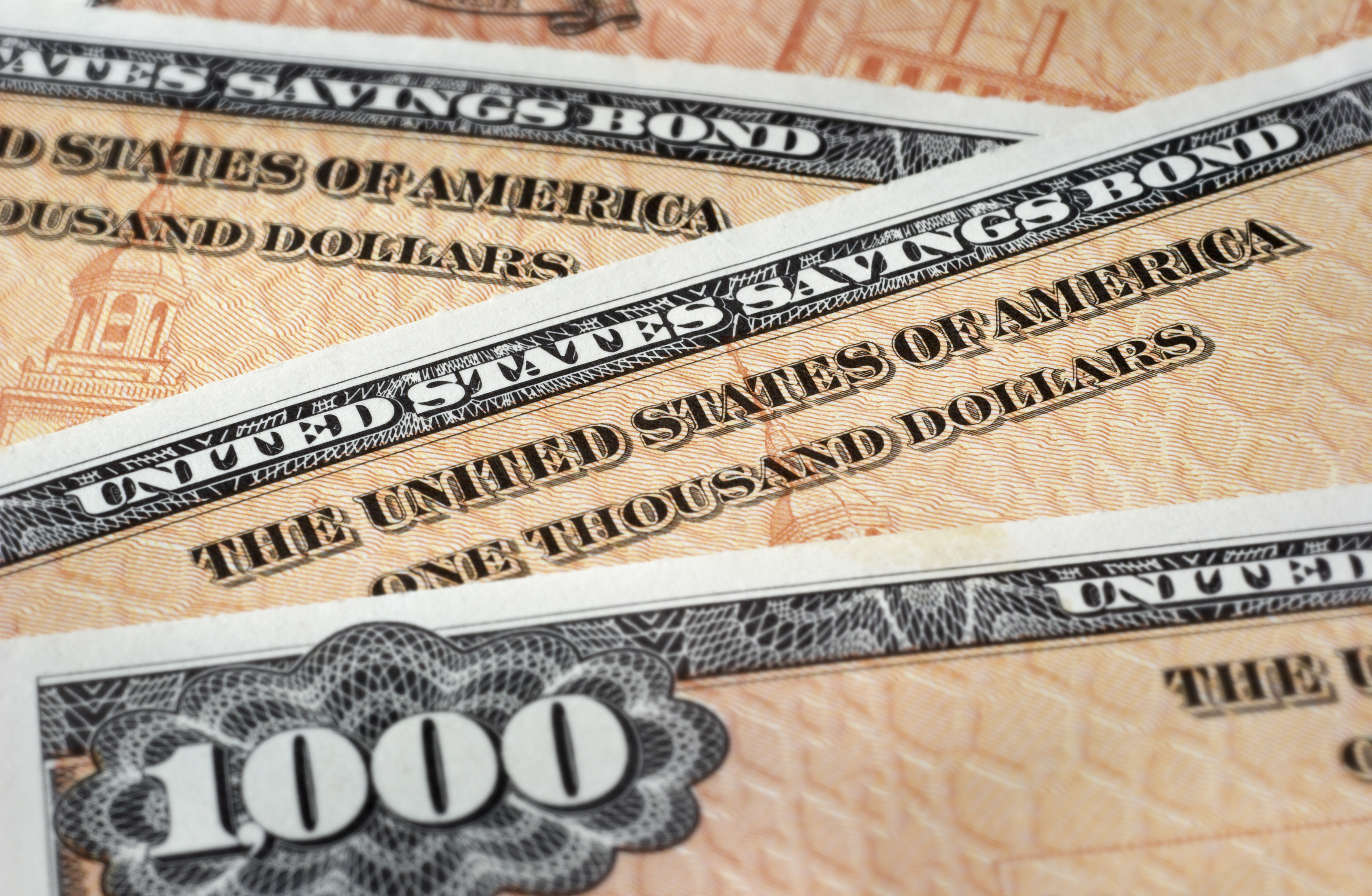The Current I-Bond Rate Is Mildly Attractive. Here's Why.
The current I-bond rate is active until April 2026 and presents an attractive value, if not as attractive as in the recent past.

Alexandra Svokos

Though the potential return of U.S. Treasury I-bonds as a long-term investment is no sure thing, Americans have voted for them with their wallets: Billions of dollars of these formerly obscure securities were sold in 2022, including in a last-minute rush at the end of October of that year to capture the 9.62% rate.
The demand was so robust it knocked the TreasuryDirect website, the only place these bonds can be bought, offline at times.
Of course, you can get them just fine today, now that the current I-bond rate is down. The rate is set every six months, in May and November, and is made up of two components.
One is based on the government’s consumer price index (CPI). Inflation has slowed since 2022, but price stability amid the on-again, off-again rollout of President Donald Trump's tariffs policy is once again a major question for markets. The rate for I-bonds is down vs late 2022. But it is rising again. And it does look like an attractive prospect in certain lights.
From just $107.88 $24.99 for Kiplinger Personal Finance
Become a smarter, better informed investor. Subscribe from just $107.88 $24.99, plus get up to 4 Special Issues

Sign up for Kiplinger’s Free Newsletters
Profit and prosper with the best of expert advice on investing, taxes, retirement, personal finance and more - straight to your e-mail.
Profit and prosper with the best of expert advice - straight to your e-mail.
The other component of the I-bond return is a fixed rate – picked by the Treasury Department without further explanation – that will only apply to bonds issued November 1, 2025, to April 30, 2026.
And that fixed rate is, well, fixed – unlike the variable inflation component, whatever the fixed rate was when the bond was issued, you’ll get paid that for as long as you hold the bond (and the term is 30 years).
The current I-bond rate, valid for bonds issued November 1, 2025, through April 30, 2026, is 4.03%. That includes a fixed rate of 0.90%.
To put that in context, the best high-yield savings accounts and the best CD rates are giving returns around 4.2%.
More than three quarters of the way through a volatile 2025, the S&P 500 has had a year-to-date return of 13.5% after rebounding from a historic sell-off and making analysts' top S&P 500 stocks to buy an attractive option.
So, 4.03% may not be all that much to write home about. But I-bonds are still on the table because they offer stability and a guarantee.
What makes the current I-bond rate attractive
Consider the fixed rate of an I-bond, which is an important component of what an I-bond is. That rate is fixed for as long as you hold the bond, which has a term of 30 years.
So, if you purchase an I-bond between now and November, you'll always get a return of at least 1.10%. Again, that's not a huge return, but it's a guarantee — and considering that people's most popular investment is cash, 0.90% for 30 years is a much higher return than you might get with cash just sitting in a checking account.
So here’s an interesting twist, and possibly a consolation prize for anyone who didn’t manage to get I-bonds when they were paying a higher yield in 2022: those bonds paid a fixed rate of zero.
While it might seem unimaginable now – as the Federal Reserve has just started to lower short-term interest rates after a long period of higher rates, and other rates, including mortgages, have climbed to levels not seen in decades – zero inflation or deflation could return.
And, if that happens, those who hold bonds bought between now and April 30 will continue to receive 0.90% interest, while holders of the 9.62% bonds will receive – at least so long as inflation is flat or negative – nothing.
And, again, if 0.90% seems laughably low, remember that only a few years ago, savers looking to certificates of deposit, savings accounts and other low-risk investments would have been darn happy with that.
What to do with your I-bonds
First, I-bonds must be held for at least a year. There is no way to cash them before this period.
And, second, if you redeem them before five years from the time they were issued, the last three months of interest is lost.
Another key note: There’s a limit of $10,000 a year to how much you can buy in I-bonds.
In case you haven't noticed, I-bonds are a little complicated.
Ultimately, though, for the moment, they present a reasonably attractive long-term option for safe cash growth.
Related Content
Profit and prosper with the best of Kiplinger's advice on investing, taxes, retirement, personal finance and much more. Delivered daily. Enter your email in the box and click Sign Me Up.

In his former role as Senior Online Editor, David edited and wrote a wide range of content for Kiplinger.com. With more than 20 years of experience with Kiplinger, David worked on numerous Kiplinger publications, including The Kiplinger Letter and Kiplinger’s Personal Finance magazine. He co-hosted Your Money's Worth, Kiplinger's podcast and helped develop the Economic Forecasts feature.
- Alexandra SvokosDigital Managing Editor
-
 Metro by T-Mobile Is Giving Away This Samsung Galaxy A16: Which Plans Are Eligible?
Metro by T-Mobile Is Giving Away This Samsung Galaxy A16: Which Plans Are Eligible?Metro by T-Mobile is offering free Samsung Galaxy A16 phones on eligible plans right now. Here’s how the deal works.
-
 I Drive and Collect Classic Cars: Here’s How I Got Started
I Drive and Collect Classic Cars: Here’s How I Got StartedAre classic cars a hobby or an investment strategy — or both? Either way, the vintage car scene is much cooler and more affordable than you think.
-
 My First $1 Million: Retired Middle School Teacher, 68
My First $1 Million: Retired Middle School Teacher, 68Ever wonder how someone who's made a million dollars or more did it? Kiplinger's My First $1 Million series uncovers the answers.
-
 Metro by T-Mobile Is Giving Away This Samsung Galaxy A16: Which Plans Are Eligible?
Metro by T-Mobile Is Giving Away This Samsung Galaxy A16: Which Plans Are Eligible?Metro by T-Mobile is offering free Samsung Galaxy A16 phones on eligible plans right now. Here’s how the deal works.
-
 I Drive and Collect Classic Cars: Here’s How I Got in the Game Without Spending a Fortune
I Drive and Collect Classic Cars: Here’s How I Got in the Game Without Spending a FortuneAre classic cars a hobby or an investment strategy — or both? Either way, the vintage car scene is much cooler and more affordable than you think.
-
 My First $1 Million: Retired Middle School Teacher, 68, North Carolina
My First $1 Million: Retired Middle School Teacher, 68, North CarolinaEver wonder how someone who's made a million dollars or more did it? Kiplinger's My First $1 Million series uncovers the answers.
-
 The $183,000 RMD Shock: Why Roth Conversions in Your 70s Can Be Risky
The $183,000 RMD Shock: Why Roth Conversions in Your 70s Can Be RiskyConverting retirement funds to a Roth is a smart strategy for many, but the older you are, the less time you have to recover the tax bite from the conversion.
-
 A Financial Pro Breaks Retirement Planning Into 5 Manageable Pieces
A Financial Pro Breaks Retirement Planning Into 5 Manageable PiecesThis retirement plan focuses on five key areas — income generation, tax management, asset withdrawals, planning for big expenses and health care, and legacy.
-
 4 Financial To-Dos to Finish 2025 Strong and Start 2026 on Solid Ground
4 Financial To-Dos to Finish 2025 Strong and Start 2026 on Solid GroundDon't overlook these important year-end check-ins. Missed opportunities and avoidable mistakes could end up costing you if you're not paying attention.
-
 Nasdaq Leads as Tech Stages Late-Week Comeback: Stock Market Today
Nasdaq Leads as Tech Stages Late-Week Comeback: Stock Market TodayOracle stock boosted the tech sector on Friday after the company became co-owner of TikTok's U.S. operations.
-
 9 Types of Insurance You Probably Don't Need
9 Types of Insurance You Probably Don't NeedFinancial Planning If you're paying for these types of insurance, you may be wasting your money. Here's what you need to know.